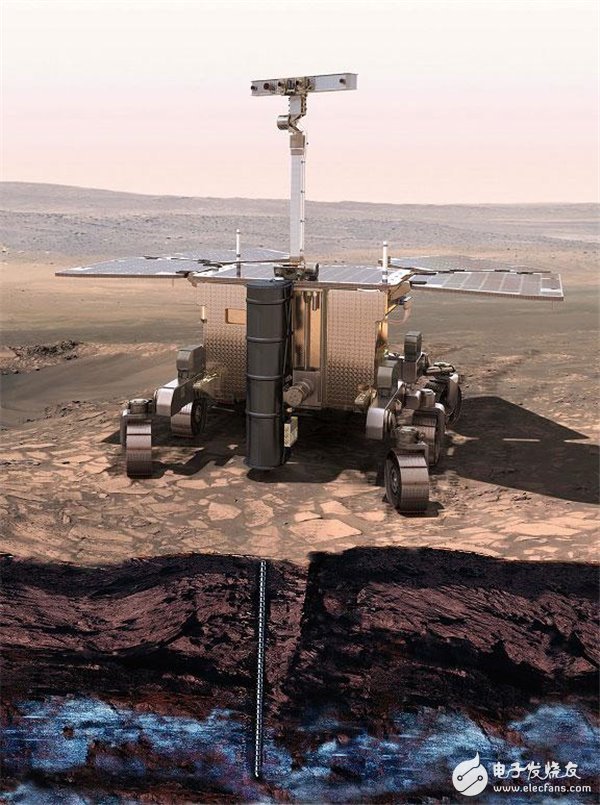On October 19 this year, the European "Schiaparelli" lander crashed on the surface of Mars due to a failure of the inertial measurement unit (IMU). However, after nearly a month, ESA applied for an additional fee of 400 million euros (about 2.92 billion yuan) to the member states on November 25 to complete the ExoMars rover mission launched in 2020. It will also be Europe's first rover.
ExoMars is a collaborative project between ESA and Russia with the main goal of searching for the lives of Mars present and past. The project consists of two parts. The first mission is the "Mars Trace Orbiter" (TGO) and "Xiaparuili" landers that successfully reached Mars this year. TGO successfully entered the orbit around Mars in mid-October. The Chaparelli was defeated on Mars, and the Chaparelli was originally used to verify the landing technology of the 2020 ExoMars Mars.
David Parker, director of the ESA's manned space and robotics exploration department, said that in order for the ExoMars Mars to be launched as scheduled, ESA still needs 400 million euros, including all from now to the Rover. cost.
The 23 ministers, including Canada, a member of the European Space Agency, will vote on whether to pay for the ESA application at this meeting in Luzern, Switzerland, this Thursday-Friday.
ESA Director Jan Woerner warned earlier this month that the ExoMars project was in a budgetary dilemma, after the project had a budget of 1.5 billion euros, but there are still hundreds of millions of euros in the gap. The ExoMars Mars was originally scheduled to be launched in 2018, as funding issues have been delayed for two years.
Learn from the failure of the Chaparelli landing failure
After reviewing the same amount of data in the mountains, ESA announced on Thursday that the crash of the Chaparelli was due to a computer malfunctioning when measuring the speed of the lander, causing the navigation system to use erroneous data. A negative value occurs at height, and it is mistaken that the lander is below the ground at this time. After deciding that it had landed, the Chaparelli abandoned the parachute and protective cover, and in fact it was at an altitude of 3.7 km above the surface of Mars, and then the lander was free to fall and hit Mars at 540 km/h.

The rover can drill 2 meters below the surface of Mars and search for life hidden underground.
David Parker said: “As you learned in a perfect experiment, you can learn a lot from failure. So we learn from the failure of the Chaparelli and work hard to make it 2020. The task is done."
Parker also said that in addition to the crash of the lander, everything else worked as planned, such as the main detector Mars trace gas orbiter. The Mars Rover launched in 2020 is striking on scientific goals, and it can drill 2 meters deep Martian soil. Parker said that in addition to the ExoMars Mars, no other country has plans to explore the surface of Mars, and if there is life there, it is most likely to be discovered.
With the advent of 5G era, people put forward higher requirements on all aspects of indoor coverage. Due to difficulties in deployment and limited capacity growth, the traditional Das solution is not suitable for the development trend of 5G. The 4G distributed pick-up station can support 5G NR through modification. Project implementation is relatively simple, can achieve 4 × 4. MIMO has excellent capacity and performance, suitable for a variety of scenarios of 5G indoor coverage. This paper studied the layout position of Pico RRU in distributed Pico base station construction scheme, and designed the Pico RRU automatic layout function based on genetic algorithm in the drawing, in order to improve the efficiency of indoor power distribution system design
ISDB Antenna ,ISDB-T Antenna ,ISDB Antenna for Car ,IDSB antenna for Japan
Yetnorson Antenna Co., Ltd. , https://www.yetnorson.com